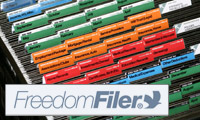Figuring out what to watch on TV

I’ve learned over the years how easily overwhelmed I am when I have too many choices. I blogged a few years ago about how I prefer buying Apple computers because they limit your choices. I know that one of the reasons I love my tiny wardrobe is that I don’t have to choose from a lot of options when I get dressed.
My most recent struggle with too many choices is television. I love TV and usually watch some TV while I knit or color in the evening. But I find myself yearning for my childhood days when I had a choice of about four things to watch. I cut the cord on cable five years ago but now there’s more to watch than ever before.
With all the choices available to me on Hulu, Netflix, Amazon Prime, plus various other channels on my Roku, I can’t settle on anything! And it’s making me a little crazy. Last night I found myself killing an hour watching a new game show for heaven’s sake (The Wall, not worth my time)!
For some reason I’m turning TV watching, which I do to relax, into a source of stress. That’s ridiculous. I think I have to do something to narrow down the options, so I’m not stressed out by deciding what to watch. Here’s what I think I’ll do:
- Pick two shows (a comedy and a drama/action show) with the intention of watching each in its entirety, because I love doing that. I’m selecting two so I can choose depending on my mood.
- Give the shows on the current lineup at least three episodes each before abandoning.
- Keep a list in Evernote of shows I’ve tried watching, shows I’d like to check out, and shows I’ve seen before that I’d consider streaming again.
I just found this Rolling Stone article on the 100 best TV shows of all time. I’ve seen many of them (and would rewatch some) and it reminds me of some renowned shows that I’ve been meaning to watch. I think it will help me create a few lists to narrow things down so can get past this frustration.
How about you? How do you handle deciding what to watch on TV? Also, do you have any shows you think I should add to my short list?
The Breville Tea Maker: A Unitasker worth having

I typically avoid buying appliances or gadgets that serve only one purpose. The wonderful blog Unclutterer calls those items Unitaskers and features them on Unitasker Wednesdays.
But last month I made an exception to that rule and purchased the Breville BTM800XL One-Touch Tea Maker. It’s an electric tea kettle and brewer. Two of my friends and colleagues, Amanda Rickers and Sheila DeHart each had one and raved about it. I found it irresistible.
My biggest hesitation was that I didn’t want to take up counter space in my new kitchen, which we’ve managed to keep free of clutter. But then I realized I could put it in my auxiliary kitchen (we live in a two-family house and have two kitchens), which is conveniently located next to my office. So now, instead of having to go upstairs for a cup of tea, I can brew one nearby while I work.
The way the Breville Tea Maker works is that you fill the basket with the appropriate amount of loose tea (it reminds me of an old fashioned percolator). Then you fill the glass jug with the appropriate amount of water. Put the basket in the jug, where it remains above the water until the water is boiled to the exact right temperature for the type of tea you’ve told the tea maker you’re brewing. When that temperature is reached, the basket is slowly lowered into the hot water where it stays briefly. It will go up and down to get the right strength. I think a magnet is involved.
After you press the On button, you can walk away and come back to a perfect cup of tea, brewed to the strength you’ve indicated. It’s wonderful.
I had to buy a few loose teas because I was accustomed to using tea bags. I purchased some tea tins from the Container Store and labeled them. (I used Washi tape to indicate those that are decaf, which is an important distinction for me, since I don’t like to drink much caffeine.)
Here’s my setup (that’s a photo of the beautiful Serenity Tea from the London Tea Room in St. Louis up at the top of this post), along with a couple of videos of the tea maker in action:
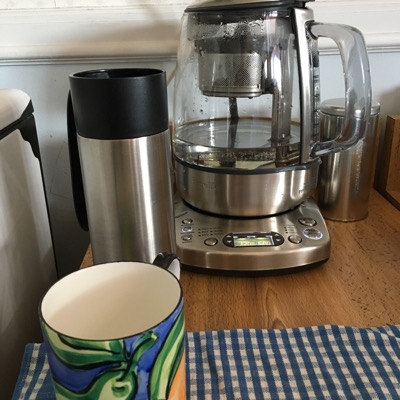

I don’t know how much use my tea maker will get in the summer, but while it’s still cold out, it’s a huge hit. I’ve enjoyed it practically every day since I received it a few weeks ago. A nice warm cup of tea is my part of my self-care regimen and this Unitasker makes it easy. What a great gift to myself.
Worth repeating: Five ways to make packing easy
I left for Salt Lake City yesterday and packing was a breeze, thanks to my packing system that helps ensure I don’t overthink or overpack. Now that I’m doing Project 333 and have so few clothes from which to choose, it’s even easier! I shared my system in a post I originally wrote in 2014, and I thought I’d share it again.
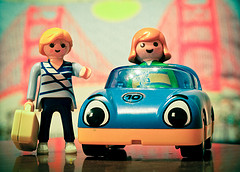
I travel every month or two and over the years I’ve managed to make packing fairly stress free. There are five practices that I’ve adopted that have helped make packing a piece of cake.
- I put together my outfits before I pack. I detailed my method in this blog post on avoiding overpacking but the basic point is that I plan my outfits before I pack and I don’t bring any more clothes than those that are needed for the outfits. It makes it easier to get dressed during the trip, too, since the decisions have already been made.
- I limit my shoes. I know, I know. That’s tough. But shoes are heavy and space-consuming. I try hard to bring no more than one or two pairs of shoes or boots beyond the pair I’m wearing while traveling.
- I keep a travel set of toiletries. I have travel-sized version of almost all my toiletries and they live in my toiletries kit. This way I save time packing and I don’t have to stress about forgetting something.
- I take only the makeup I need. It’s not practical for me to keep a travel set of makeup (it would go bad before I could use it up), but I just pack it into a makeup kit as I put it on the day of travel. Unless I’m going to a super-fancy event on my trip, I just take along this everyday makeup, not a whole bunch of different shadows or potions to choose from when I’m at my destination.
- I use a travel jewelry case. The Clos-ette Too Travel Jewelry Case makes it easy for me to take along what I need (and no more) and to see what I have brought. It also prevents my necklaces from getting tangled.
There are plenty of things to stress out about when traveling. Packing needn’t be one of them. By making decisions in advance and limiting my choices when I’m traveling, I make the process easier—and my bag lighter.
Photo by Susana Fernandez via Flickr
No Excuses series (part 3): "It was a gift"
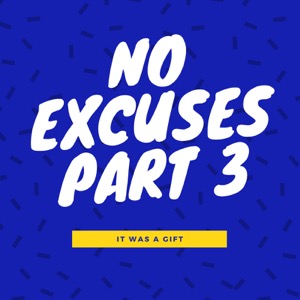
This is the third in a three-part series of posts debunking the three excuses I hear most frequently from clients for wanting to keep items they no longer use or love. Click here to see the other articles in the series.
The third common excuse I hear for keeping an unloved or unused item is that it was a gift. This is a tough one. People tend to have a difficult time parting with items that were given to them. (As an aside, this has completely changed how I give gifts, knowing that my gift may some day become clutter for the recipient.)
What do I say to clients who tell me they can’t let go of something because it was a gift? The first question I ask is:
- Do you think the gift giver would really want you to keep something you don’t use, just because they gave it to you? If they knew you were investing time and money in paring down your belongings and getting organized, would they care if you let it go?
Usually that’s enough to help the client release it. If that doesn’t do the trick, I might ask:
- Is there another family member you can pass this on to who would love it?
That can be very helpful, especially when the gift giver has passed away. (I’m the thrilled recipient of some paintings that my grandmother created, given to me by her nieces when they were decluttering.)
Really, what I find is that the client just needs permission to let gifts go. So let me do that for you right now: You are not obligated to keep an item you don’t use or love just because it was a gift. I give you permission to re-gift it or donate it. Don’t stash it in a closet. And try not to worry that the giver will ever ask about it. Chances are they won’t.
No Excuses series (part 2): "I paid a lot for it"

This is the second in a three-part series of posts debunking the three excuses I hear most frequently from clients for wanting to keep items they no longer use or love. Click here to see the other articles in the series.
The second most common excuse I hear from clients who want to keep something they don’t use of love is that they paid a lot for that item. I get it. It feels terrible to let go of an expensive item that turned out to be a foolhardy purchase. But you know what? Keeping it doesn’t make you feel any better. In fact, when you see the item, it just makes you feel worse.
There are two important things to remember when you’re tempted to keep an item you don’t use or love just because you paid a lot for it:
- The money is spent. Keeping it won’t bring it back. Selling it will get you some of the money. And donating will get you a tax deduction. Keeping it doesn’t help.
- There’s a cost associated with keeping items that you don’t use or love, especially if clutter is an issue in your life. There’s an emotional cost (that reminder of your bad purchasing decision); there can be a physical cost if the item contributes to clutter that poses a tripping hazard or you’re unable to clean because there’s so much clutter; and there can be a financial cost if there’s so much clutter that you have to rent a storage unit.
For those expensive items you don’t use or love, I suggest pulling off the Band-aid. Take a deep breath and decide to let it go. If it’s easy to sell it, do so. Otherwise, donate it and take a tax deduction. Or make yourself feel better by giving it to someone you love. I’m pretty sure it will be a relief to get that thing out of your home!
No Excuses series (part 1): "I might need it some day"
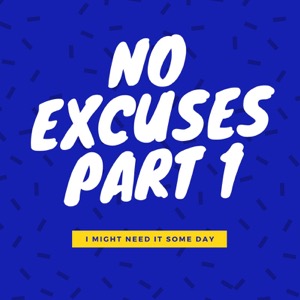
This is the first in a three-part series of posts debunking the three excuses I hear most frequently from clients for wanting to keep items they no longer use or love.
When I work with clients on decluttering, we discuss their goals and motivations for letting go of excess. They understand that it makes most sense to hang on to meaningful items, not those that are sitting idle. Yet it’s not unusual for a client to want to keep an unused item that’s perfectly good because “I might need it some day.”
I usually push back, particularly if we’re dealing with severe space constraints and the need to let go of a lot of stuff.
Here’s what I say to those clients when I hear, “I might need it some day.”:
- How likely is it that you’ll need it?
- If you decide to let it go and you do find you need it, are you able to get another one?
- If you keep it, will you be able to find it when you need it?
That last question is important, because if a client is keeping a lot of those “some day” items it may be difficult to organize the stuff they keep in a way that will allow them to find everything.
Here’s the thing about perfectly good items that aren’t being used. If they’re perfectly good, somebody else can use them. Rather than having them sit idle, taking up space, it’s better to contribute to the greater good by donating them and letting them be used. If you hang on to them until a future decluttering session and then decide to let them go, they may be less valuable or useful to others.
Basically it comes down to a couple of things:
- Your goals for decluttering and getting organized. If you’re trying to create space in your home and life so that you can find what you want when you want it and live with ease (my definition of organized), then storing a lot of unused stuff might well get in the way of that.
- A fear of regret. I think a lot of us live in fear of regretting our decisions. If you do find that you let go of an item that at a future date you could have used, you may feel a twinge of regret. But you’ll get past it. Hanging on to unneeded items is a pretty high price to pay to ward off future regret, in my opinion.
I have seen over and over how living with less makes one’s life easier. A great first step toward living with less is letting go of the perfectly good stuff you don’t use.
Stay tuned for parts 2 and 3 of the No Excuses series: “I paid a lot for it” and “It was a gift.”
Find a spot for your tax-related papers
This is the time of the year in the U.S. where the mail carrier starts bringing in tax-related documents, like W-2 and 1099 forms. To avoid that frantic feeling at tax time when you can’t easily put your hands on these important documents, I encourage you to do yourself a favor today.

Establish a spot in a safe place (like a desk) for your 2016 tax documents. It can be an envelope, a letter tray, or a file. Whatever works for you. As soon as it arrives, immediately put that tax document in your designated spot and don’t put any non-tax-related mail there.
When it comes time to figure out your taxes a potential barrier will be gone. Talk about a small action that makes your life easier!
Links
- Ravelry
- Shannon Wilkinson, life coach
- Are you interested in becoming a professional organizer?
- National Association of Productivity and Organizing Professionals
- NAPO St. Louis
- Peace of Mind Spending
- Institute for Challenging Disorganization
- Organize Your Family History
- Getting to Good Enough podcast








